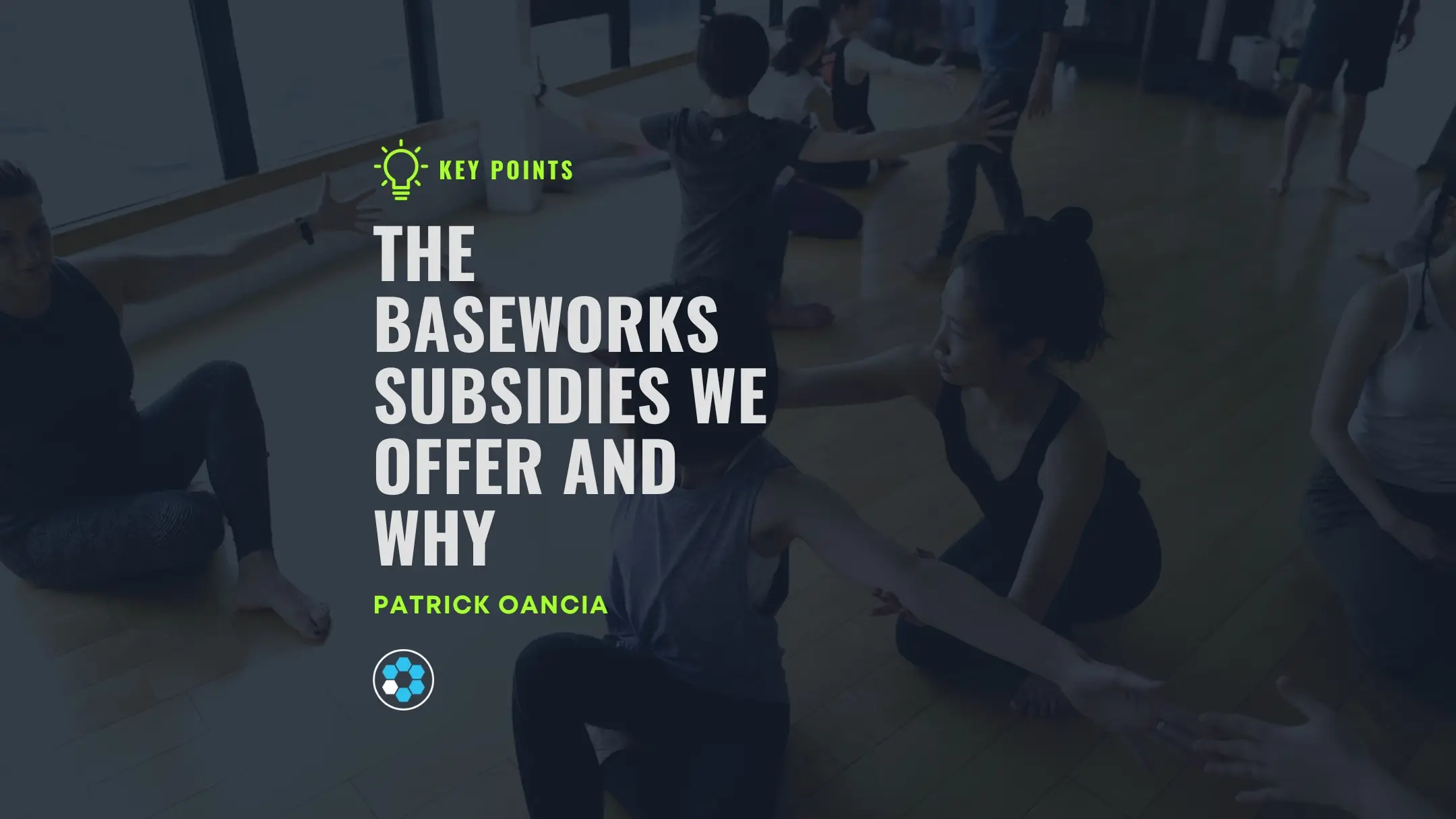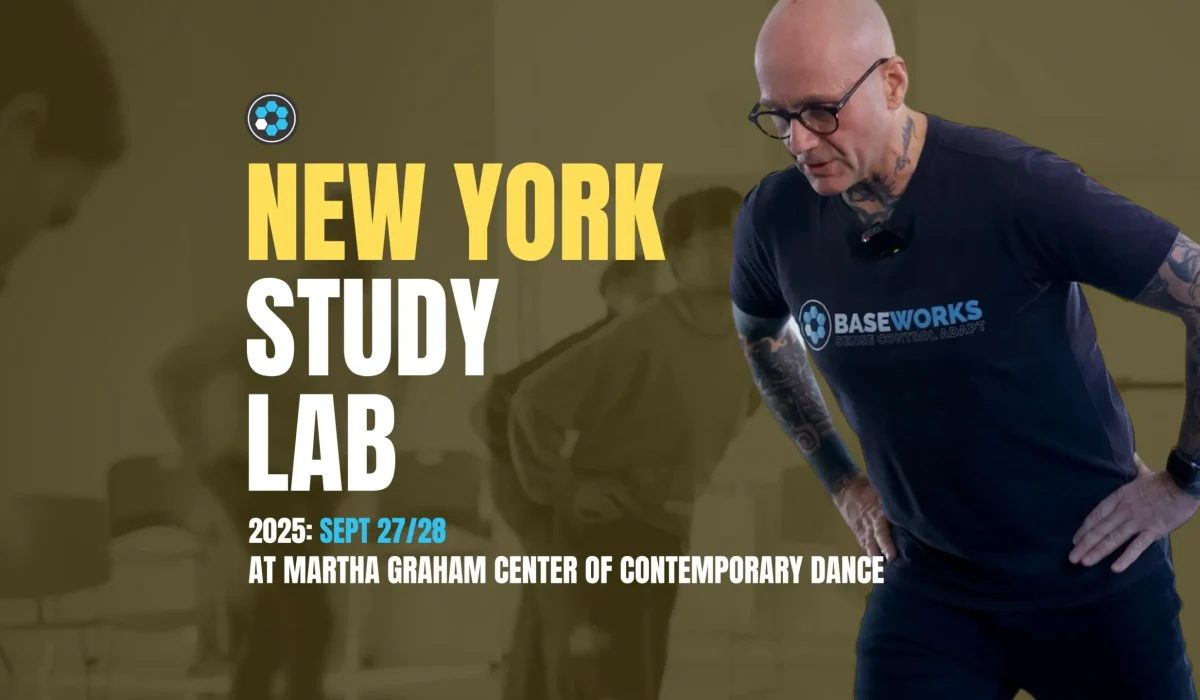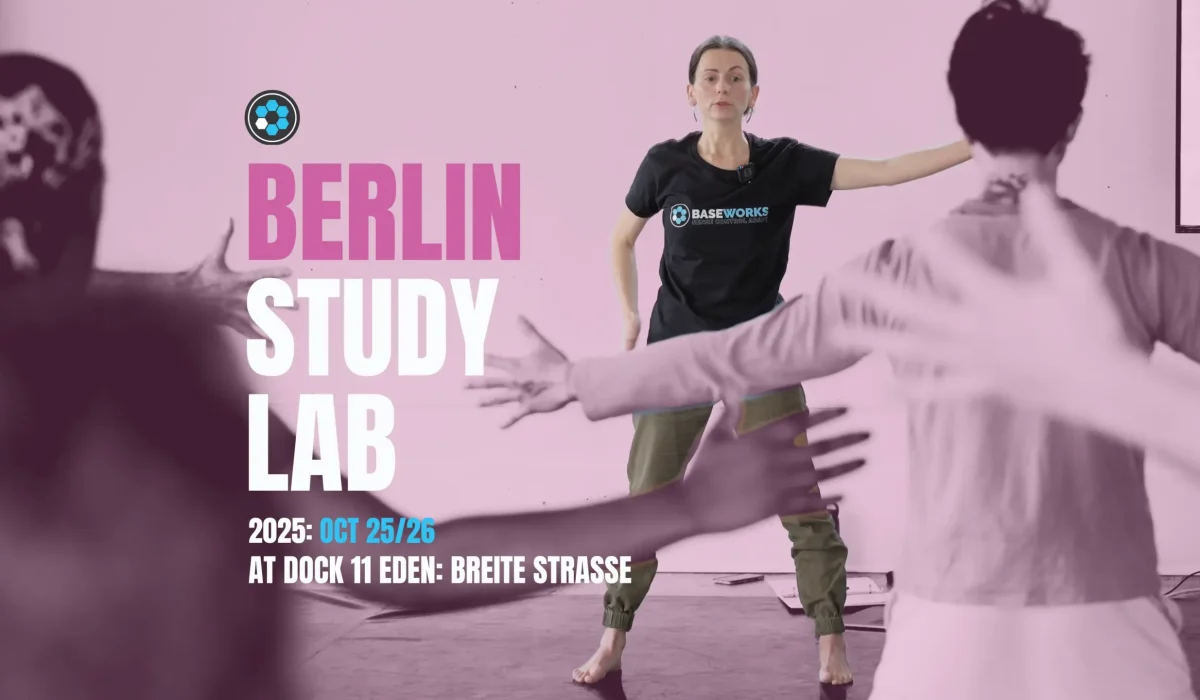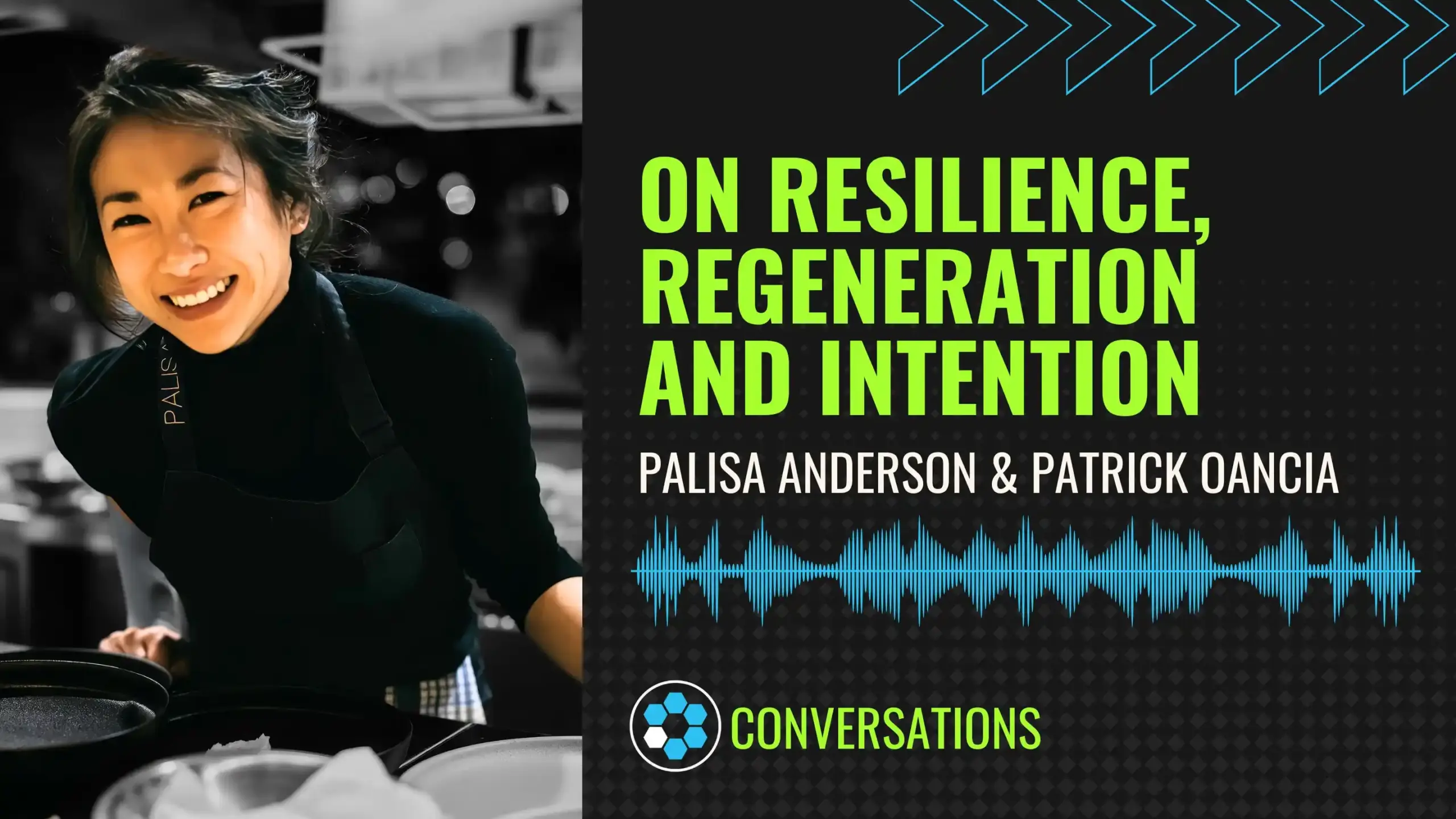Panasonic Motion Tracking & Emotion Visualizer
We were invited to participate in a project to design an experience-based demonstration to showcase a combination of two Panasonic technologies: one which evaluates emotional strain based on the reading of the face and the other which evaluates mechanical strain based on a computerized analysis of movement biomechanics.
Panasonic’s motion tracking technology can capture movement directly from video (from multiple cameras) without the need to attach any sensors to the body. It was originally developed by Panasonic to collect data for the ergonomic design of small spaces (such as toilets or small Japanese apartments). The algorithms were trained on simple movements, including sitting down, standing up, squatting, and reaching.
As movement consultants, we were responsible for testing the motion capture technology. Our objective was to design, direct and produce a yoga-inspired movement sequence for all proficiency levels, yet moderately challenging (to be analyzed by the face-reading technology) and which could be reliably interpreted by the motion capture algorithms. The project was called Panasonic Yoga Synchro Visualizer.
The production took place in Tokyo at both the Panasonic Center Tokyo in Odaiba and Broadmedia studio in Tsukishima.

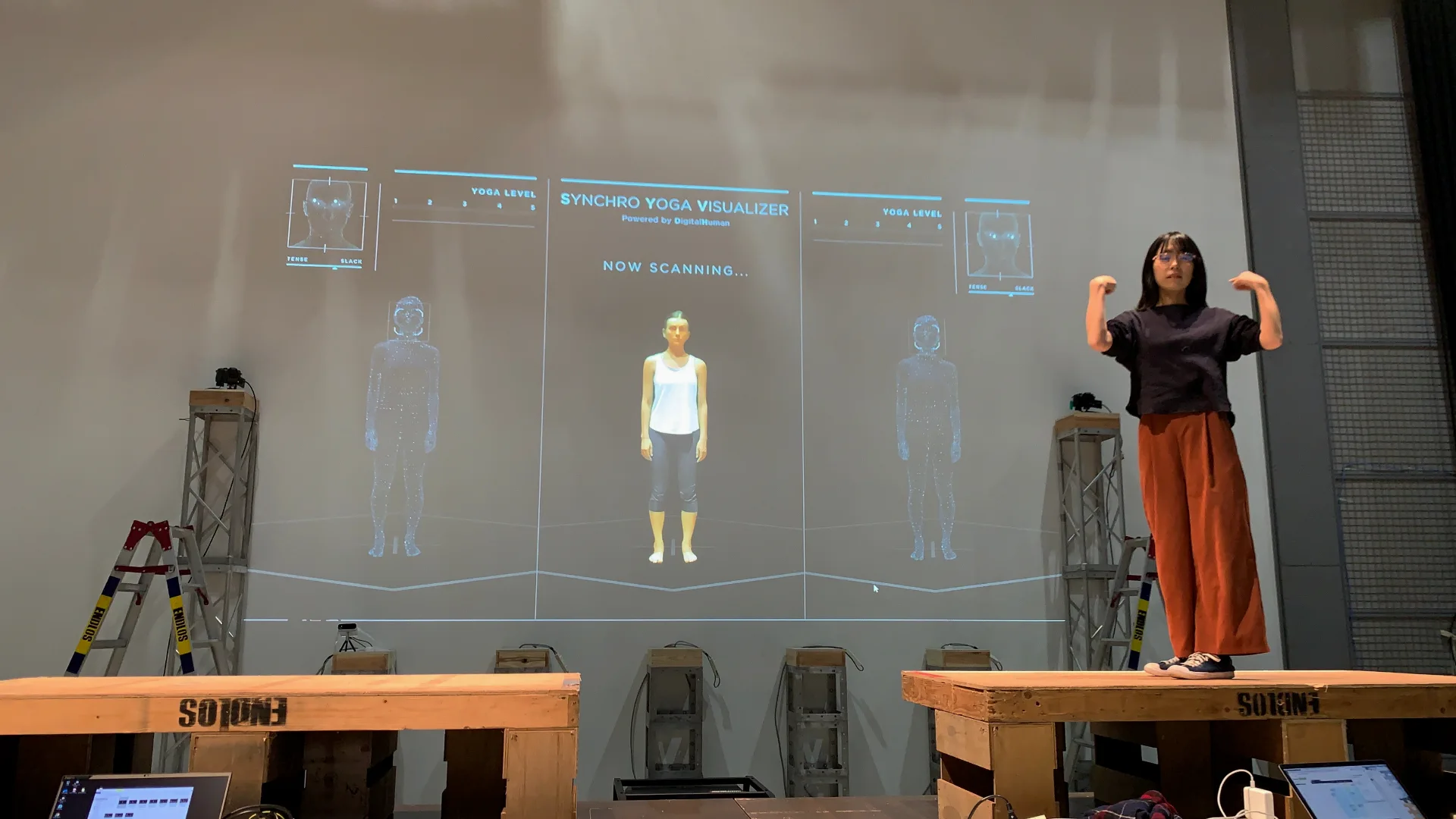
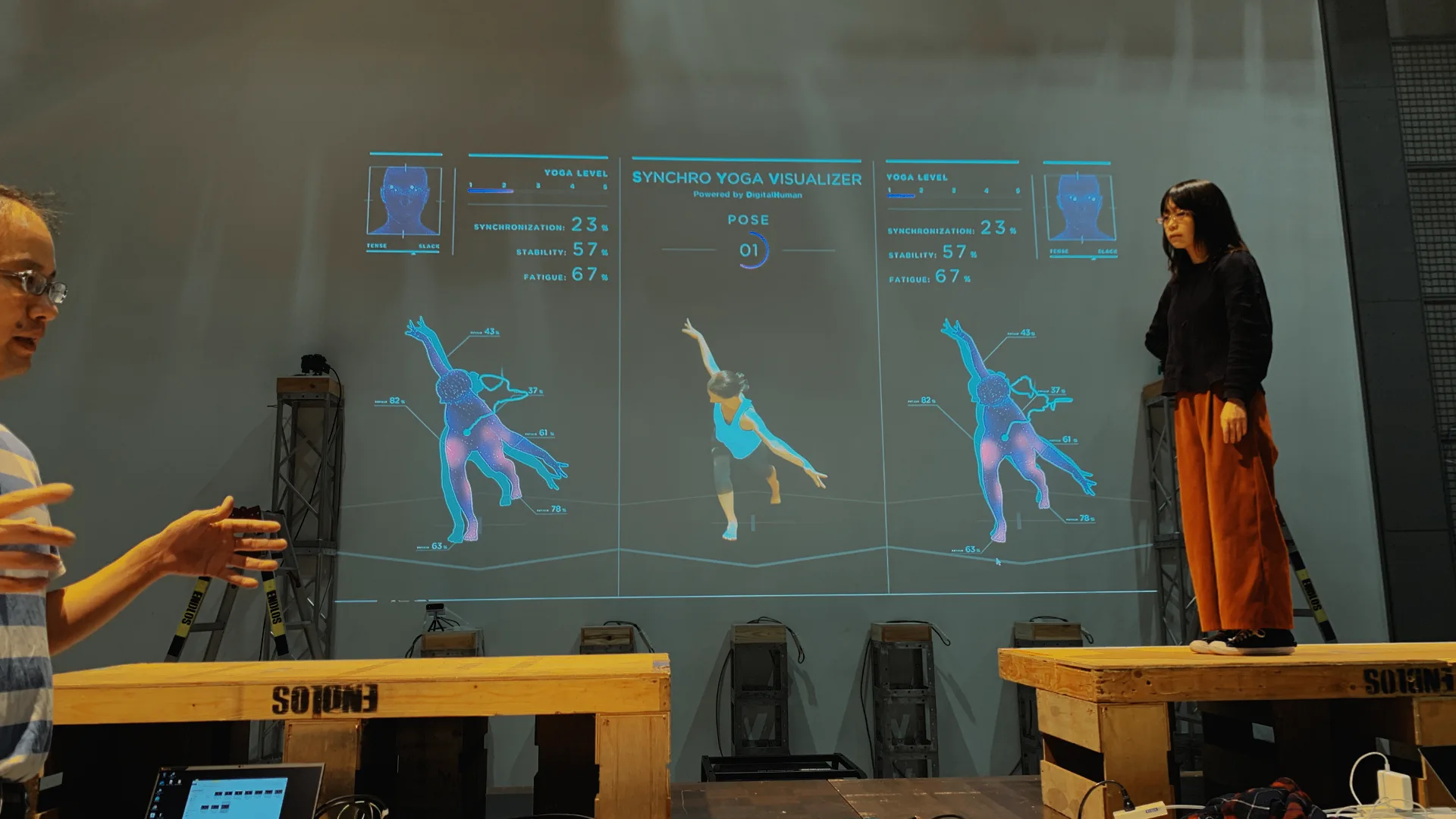
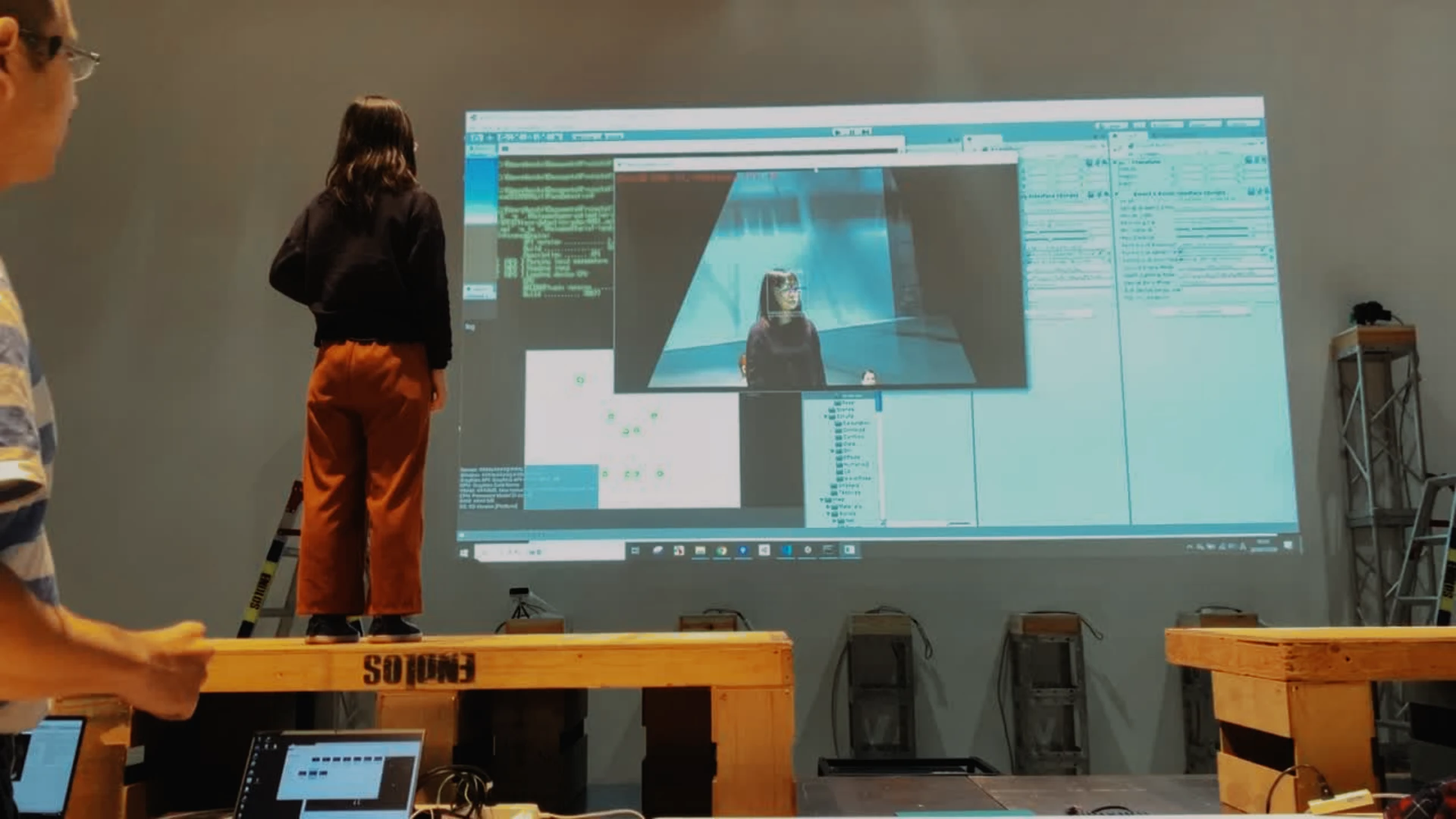
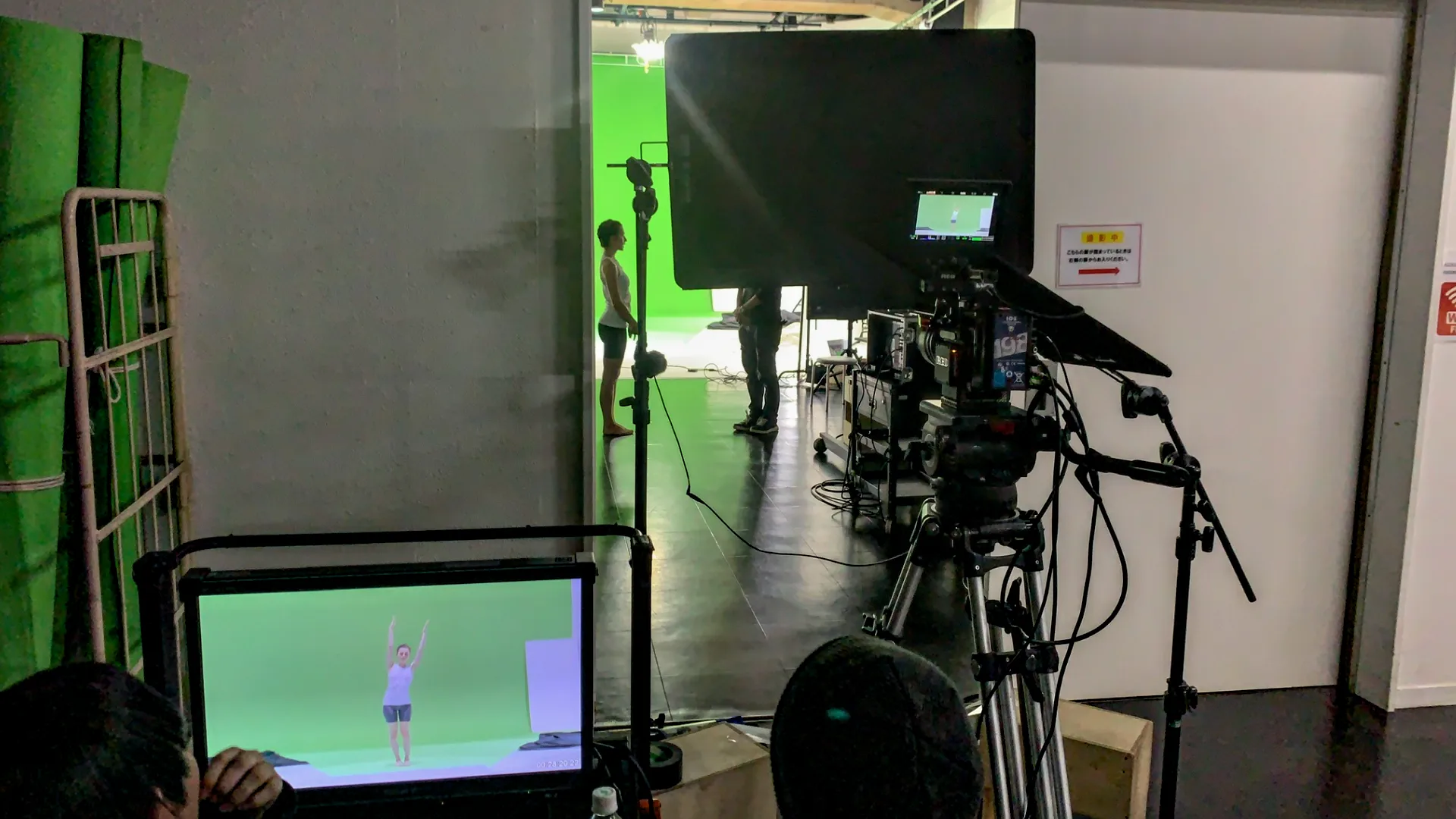
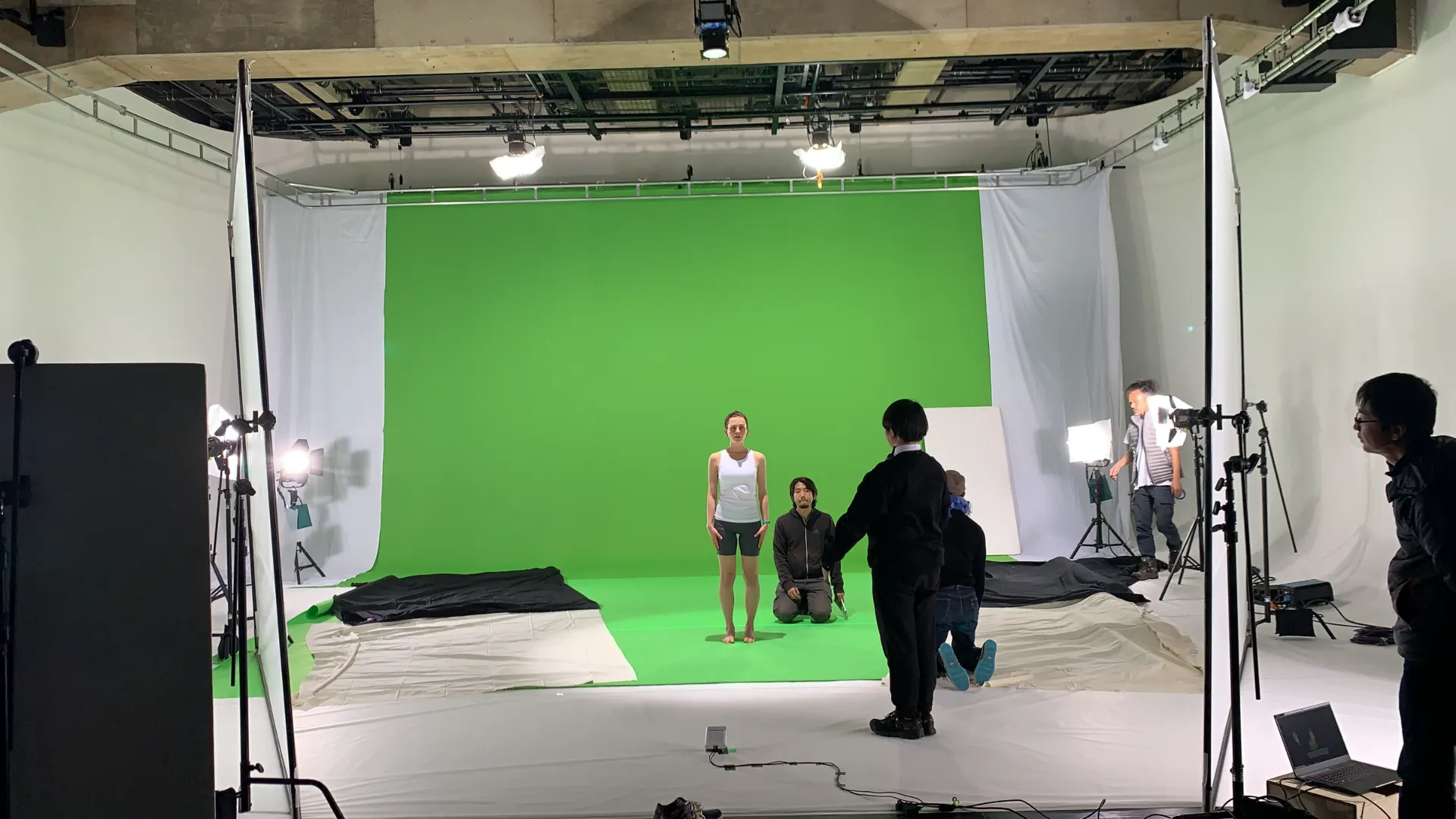
This project resulted in the creation of an experience-based application. It was first demonstrated at CES 2020 and has since been continuously displayed at the Panasonic Exhibition Center “Miraiku” (The Future Ward) in Tokyo. Visitors can still go there to follow Asia Shcherbakova’s movements and receive a computerized evaluation of their physical exertion and mental calmness.
This experience-based application has been met with great enthusiasm. As expected, the real-time reading of human mental and physical strain from a live camera has sparked interest from many industries.
We had a great time working on this project. Exploring the capabilities and limitations of sensorless motion capture technology was fascinating.
At the time of the project, the technology wasn’t developed enough to capture the details relevant to the Baseworks Method, and we have since been actively following the development of similar technologies to see if we can use them for Baseworks Practice, especially for our online platform.




